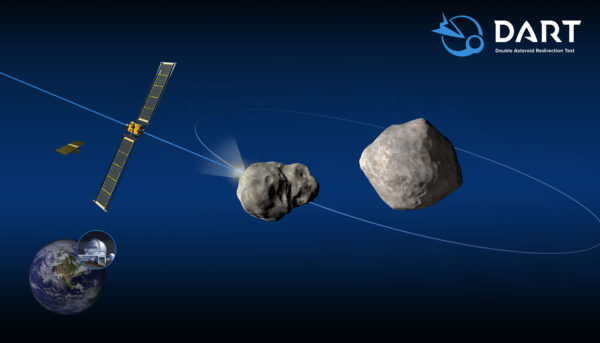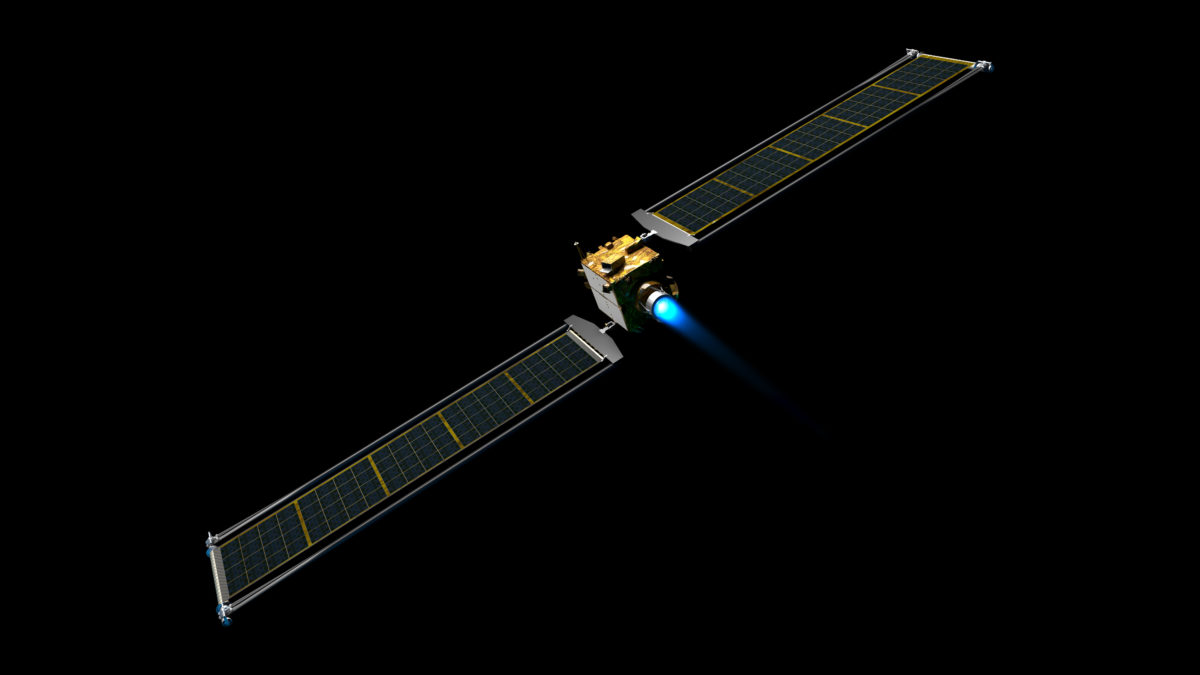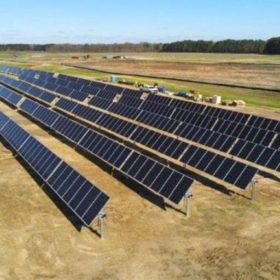NASA’s Double Asteroid Redirection Test (DART) mission launched to test the use of solar-powered electric propulsion to protect Earth from incoming asteroids.
The DART craft, which was carried out of orbit last month by a SpaceX Falcon 9 rocket, intentionally crashes itself into an oncoming asteroid, using kinetic energy to redirect the asteroid’s trajectory. It is designed to be propelled by an electric thruster that is powered by solar arrays.

The craft is designed to propel itself at about 250 miles per hour, guided by an onboard camera and autonomous navigation software, directly into the path of the asteroid. The DART test will make contact with the Didymos system’s moonlet that is headed into orbit in September 2022.
When the DART intercepts the Didymos moonlet, it will only change its speed by a fraction of one percent, but this change will increase the moonlet’s orbital period by several minutes, enough time to study the body with telescopes on Earth.
The solar arrays are designed to roll out when deployed, using the same iROSA arrays that were attached to the International Space Station this June. The state-of-the-art arrays were built to have bolstered radiation defense and improved power-per-mass that’s about 1.7 times more efficient that conventional panels.
The NEXT edition gridded ion thrusters used on DART can produce 6.9 kW thruster power. The thrusters use electricity to accelerate a xenon propellant at speeds of up to 90,000 mph, thereby moving the craft through space. A successful 48,000-hour (5.5 year) test was run on the NEXT propulsion system in 2009, showing little signs of degradation and operation-as-expected.
This content is protected by copyright and may not be reused. If you want to cooperate with us and would like to reuse some of our content, please contact: editors@pv-magazine.com.









By submitting this form you agree to pv magazine using your data for the purposes of publishing your comment.
Your personal data will only be disclosed or otherwise transmitted to third parties for the purposes of spam filtering or if this is necessary for technical maintenance of the website. Any other transfer to third parties will not take place unless this is justified on the basis of applicable data protection regulations or if pv magazine is legally obliged to do so.
You may revoke this consent at any time with effect for the future, in which case your personal data will be deleted immediately. Otherwise, your data will be deleted if pv magazine has processed your request or the purpose of data storage is fulfilled.
Further information on data privacy can be found in our Data Protection Policy.